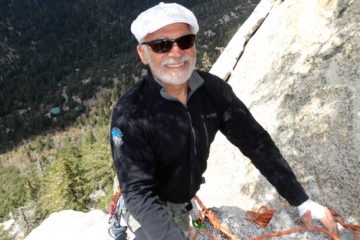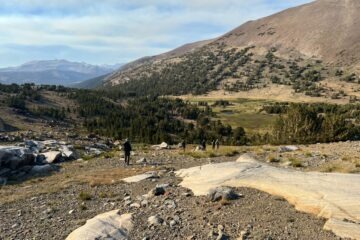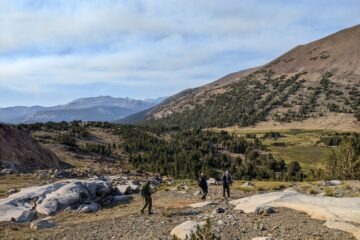Bridalveil Fall from Tunnel View. Photo: Keith Walklet.
Yosemite’s waterfalls gush, rush, roar and pour when spring snowmelt and rain start to flow. Ever wonder which waterfall is which? Read on to get to know a few of the park’s famous flowing falls — but first, a quick linguistic lesson: If you see the singular fall (as in Vernal Fall), that means the feature has just one, continuous waterfall; if you see the plural falls (as in Yosemite Falls), that means the feature contains multiple connected waterfalls.
Okay, that’s enough grammar! Now on to the fun…
Yosemite Falls
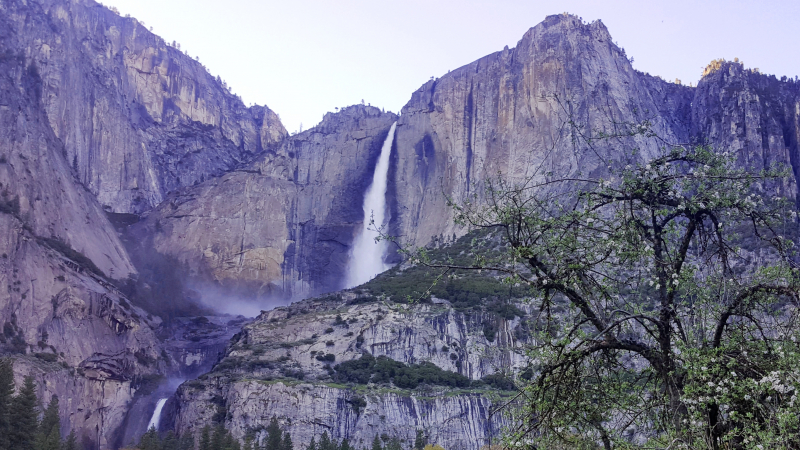
Yosemite Falls flows down the north rim of the Valley, near Yosemite Village. Together, its three sections (Upper Yosemite Fall, the middle cascades, and Lower Yosemite Fall) add up to a 2,425-foot plunge, making this one of the tallest waterfalls in the world.
Around the base of falls, you’ll find evidence of the major restoration work our donors supported several years ago. The project, which was completed in 2005, resulted in an accessible trail and boardwalks, restored habitat, educational exhibits (including a bronze relief map) and a new picnic area, shuttle stop, and restrooms. Wish you were there right now? Bookmark our webcams to watch the falls in real-time from wherever you are.
Vernal Fall
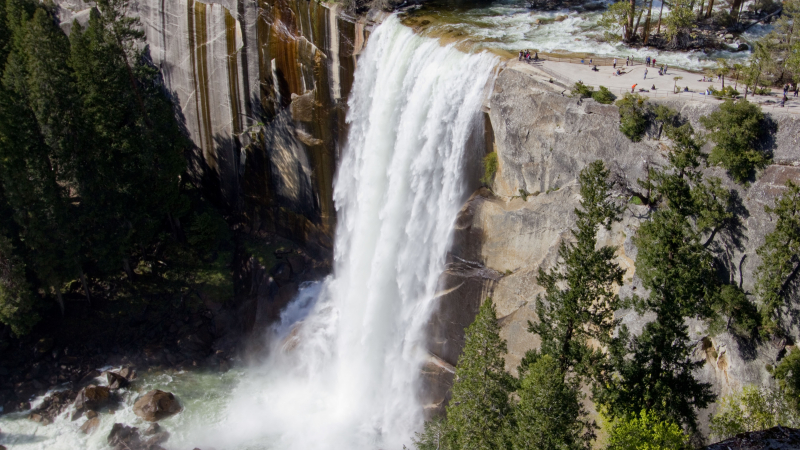
The trail to reach 317-foot Vernal Fall, at the eastern end of the Valley, includes a 1,000-foot elevation gain and more than 600 stone steps. The payoff? Spectacular views and a hearty spray of ice-cold mist.
Thanks to donor-funded grants, the fittingly named Mist Trail has benefited from seasonal repairs and trailhead improvements. If you choose to hike to Vernal Fall, be sure to stay on the trail — the lush area beside the fall provides important habitat for specialized “spray zone” plants (the focus of a 2015 grant). When you get to the top, you can catch your breath and then continue to Nevada Fall, Vernal’s equally impressive, 594-foot upstairs neighbor.
Not feeling the steep hike? Head to Glacier Point to check out a more distant but still stunning view of Vernal and Nevada falls.
Bridalveil Fall
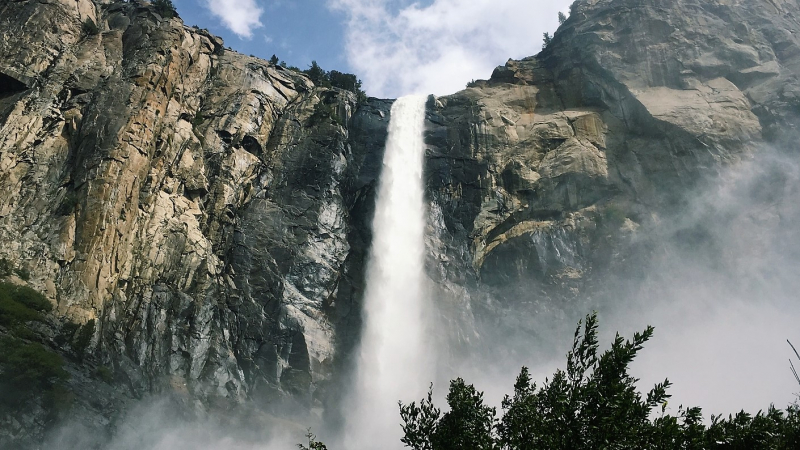
This 620-foot year-round waterfall on the south side of the Valley is a captivating sight, whether it’s gushing forcefully down the granite (as it is this spring) or gently drifting like a slender strip of lace.
You can see Bridalveil Fall from Tunnel View, the iconic overlook at the mouth of the Wawona Tunnel, and Valley View, the famed scenic spot on Northside Drive. Thanks to our donors, the former viewpoint was renovated in 2008, and the latter will be restored this year. Another 2017 grant focuses on the early stages of a project to rehabilitate the area around the fall, in order to improve the visitor experience for people who want to see the flow up close.
Planning to visit the base of Bridalveil? Bring a raincoat or umbrella (trust us). When you’re sufficiently soaked, follow the trail out to Southside Drive, and look north toward El Capitan. In the spring, especially after a wet winter, you’ll see the delicate Ribbon Fall flowing just west of the granite goliath (below). It might seem small compared to the thunderous waterworks you just visited, but at 1,612 feet, it’s the longest single-drop waterfall in the continental U.S.
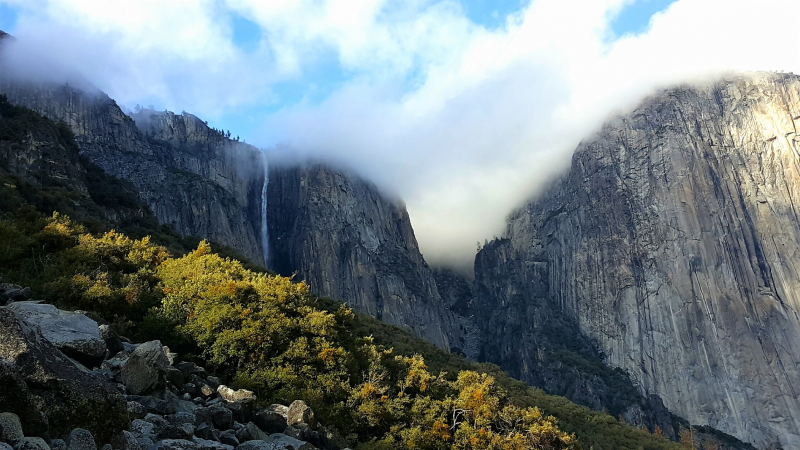
Sentinel Falls
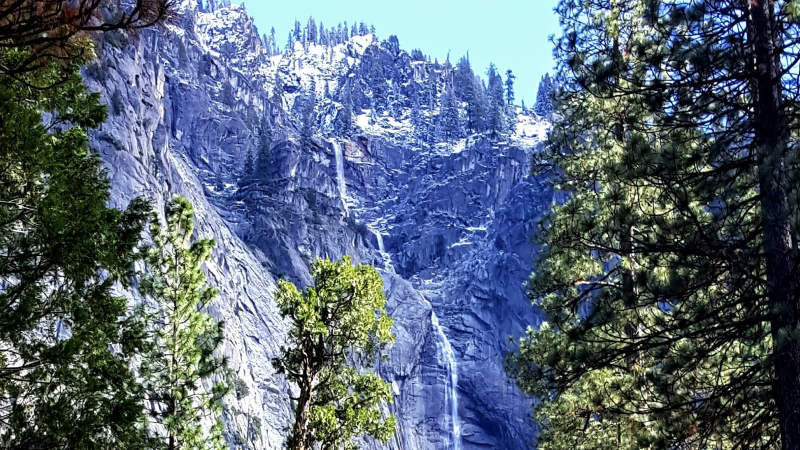
East of Bridalveil, you’ll find this seasonal beauty: Sentinel Falls, a series of cascades that drop a combined 2,000 feet down craggy granite. The aptly named falls run from Sentinel Creek, west of Sentinel Rock, so-called because of its resemblance to a watchtower.
You can see the falls from a few spots in the Valley; this shot was taken from the Valley Loop Trail, near the start of the Four Mile Trail. When you’re hiking on either of those classic trails, keep an eye out for rock walls and steps, drainage features, and other signs of restoration and repairs. Trail crews work hard to keep the Valley’s trails in top shape each season, so visitors can enjoy hikes (and waterfall views), and we’re grateful to our donors for supporting their efforts over the years!
Wapama Falls
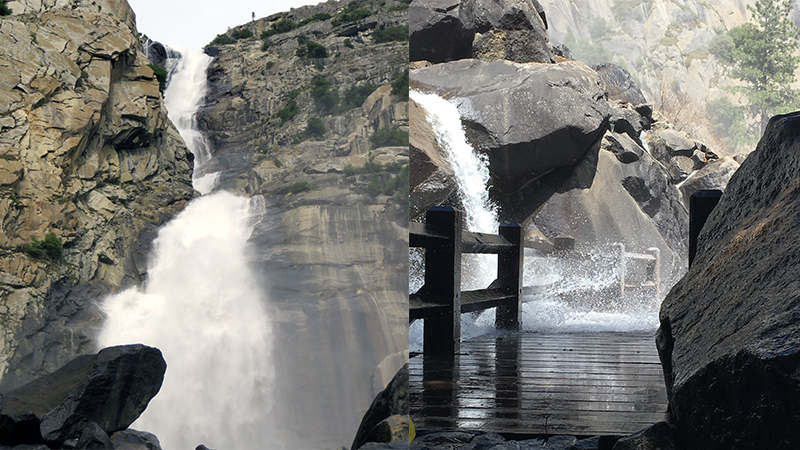
You don’t have to stick to the Valley to see impressive falls. In northwestern Yosemite, you’ll find 1,400-foot Wapama Falls tumbling into Hetch Hetchy. The cascade offers a welcome cooling spray if you’re hiking along the edge of the reservoir on a warm day, though in some spring seasons (including this one) the water courses over the footbridge.
In 2017, a group of Conservancy Outdoor Adventurers hiked to Wapama Falls, where they saw the waterlogged bridge (above, right) but didn’t cross. Instead, they headed to another, lesser known feature: Carlon Falls (below). Waterfalls often make an appearance on our naturalist-led adventures, including an upcoming backpacking trip to Waterwheel Falls (the fifth in a string of falls along the Tuolumne River, preceded by Tuolumne Falls, White Cascade, California Falls and LeConte Falls).
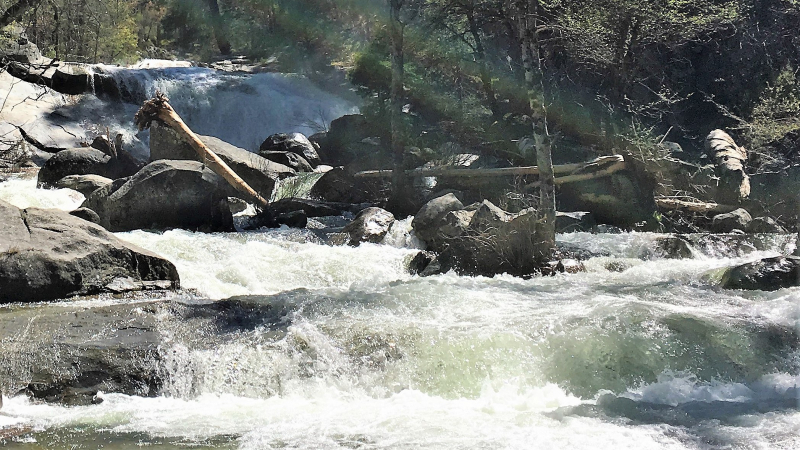
We can’t wrap up this whirlwind tour without highlighting one of the most memorable characteristics of Yosemite’s waterfalls: The colors! Many of the park’s falls, including Bridalveil Fall (below), Vernal Fall and Yosemite Falls, frequently host brilliant rainbows. When the sun is behind you, keep an eye out for bands of color in the spray; after it sets, use your camera to see and capture lunar rainbows, or moonbows. (To learn more about that after-dark phenomenon, keep an eye on our Outdoor Adventures calendar for springtime moonbow photography workshops!)
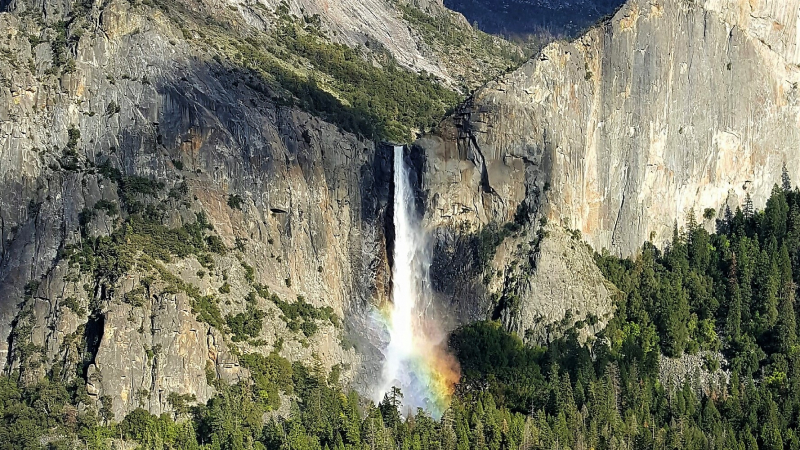
The features highlighted here are just a handful of the many waterfalls you’ll find in Yosemite. Find your own favorites, snap some shots, and show us on Flickr. Happy waterfall wanderings!

